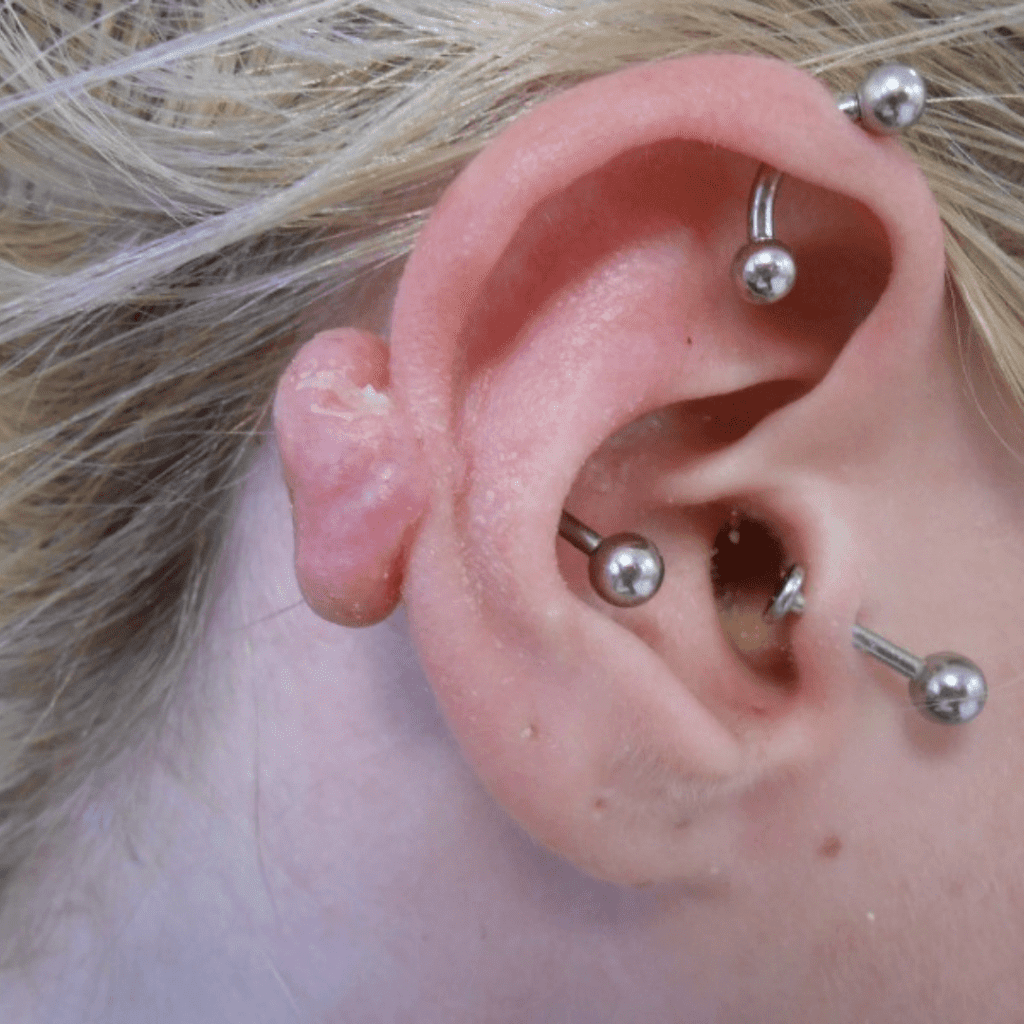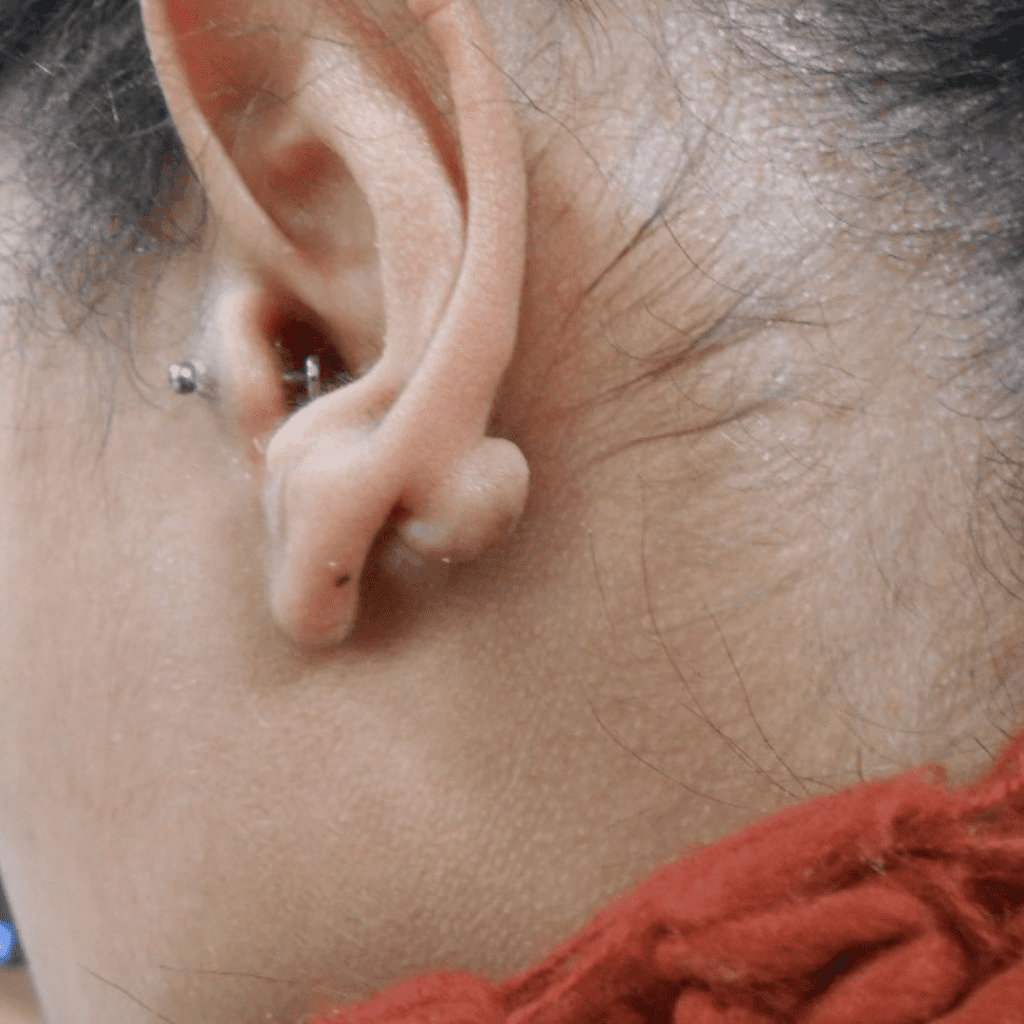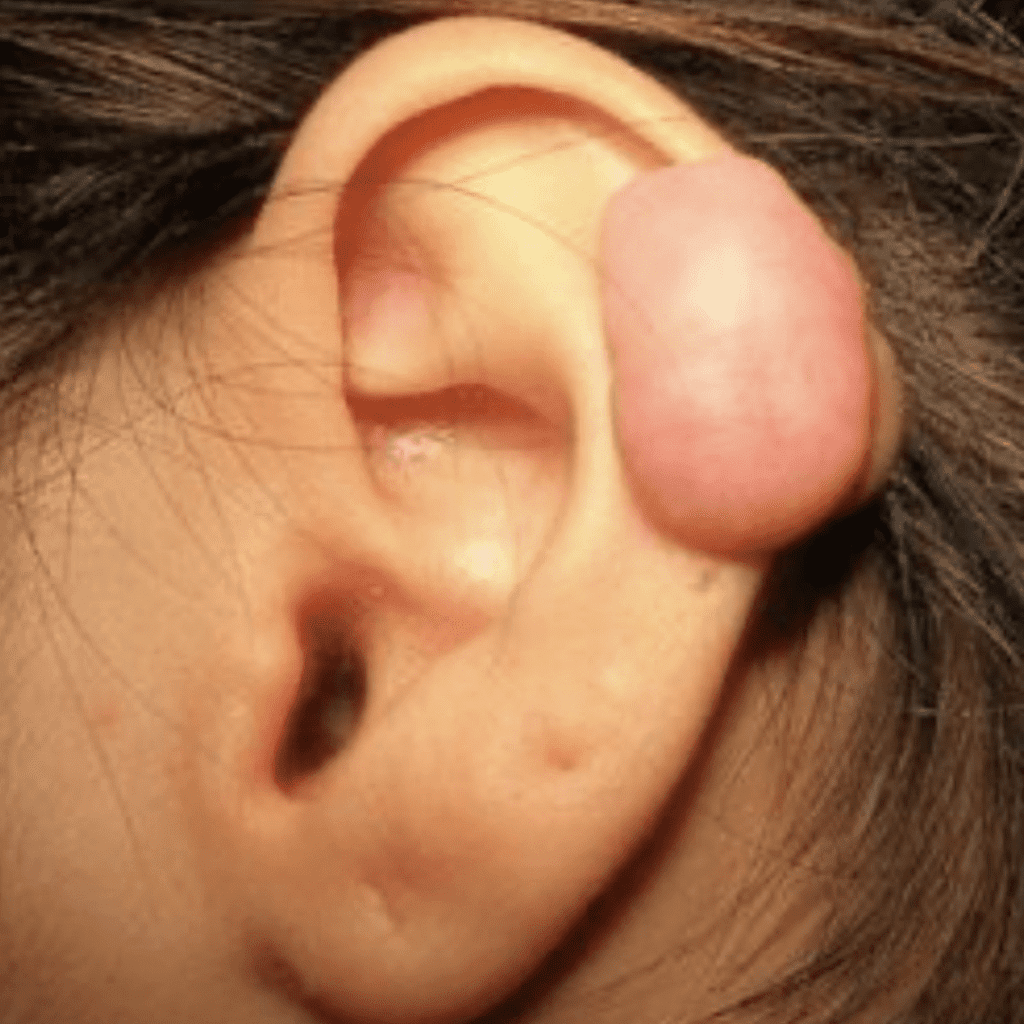What is a keloid scar?
A raised and enlarged benign growth which grows outwards on the skin and is usually pink or darker than the surrounding skin and is caused by an overgrowth of skin cells. The reason why keloids occur is usually due to minor damage to the skin.






As you can see in the images above, ear piercings often cause keloid scarring. Keloid scars are not harmful however, they can cause itchiness, tenderness and discomfort to the ear especially when sleeping or wearing certain items of clothing. The skin tissue can continue to grow larger over time which is why many people choose surgical removal as they dislike the appearance.
Do you require Keloid scarring treatment?
If you have any concerns about a keloid scar or if you are looking into surgical removal, speak to our skin specialist Dr Wright here at The Lawrence Clinic.
Keloid scarring treatment at The Lawrence Clinic:
Dr Wright offers FREE consultations and surgical removal of keloid scars.
Before your procedure:
- The Yorkshire Skin Hospital is an Outpatient facility, meaning surgical procedures do not last for more than one hour.
- Patients do not require a hospital bed, therefore, you are discharged home following a short recovery.
- All procedures are undertaken under local anaesthesia, making your recovery much quicker and far less of a risk compared to general anaesthesia.
- For those patients who are a little nervous, we can perform your procedure under light sedation.
- We offer treatment for those patients under 18 years of age.
- We provide all our patients with a free 24 hour on-call services following your procedure.
After your procedure:
- You will be given verbal advice on how to look after your wound, dressings and bathing.
- If advised, your lesion will be sent to our Histology lab and a report prepared.
- We advise that you do not drive following your procedure and be accompanied home.
- An appointment will be arranged for your post-operative follow up and removal of sutures if required.
To find out more about what we can treat and how to book, to speak to our expert team using the details below:
Click here to get in touch or Call 0113 2900 310 to book your appointment now.
